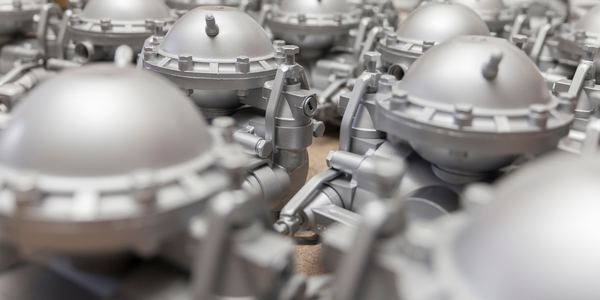Technology Category
- Analytics & Modeling - Digital Twin / Simulation
- Sensors - Haptic Sensors
Applicable Industries
- Automotive
- Life Sciences
Applicable Functions
- Product Research & Development
Use Cases
- Digital Twin
- Virtual Reality
Services
- Testing & Certification
About The Customer
The customer in this case study is the Bioengineering Department at Wayne State University in Detroit, Michigan. This department houses one of the largest continuously active biomedical research programs in the United States. For over 70 years, faculty and researchers have made significant biomedical advances through close collaboration between the Department and WSU’s School of Medicine. The Department’s Bioengineering Center is a leading laboratory focused on research into impact trauma, low back pain, and sports injury biomechanics. Current projects include vehicle side and rear impact crashworthiness analysis, head injury modeling, and lower extremity injury simulation.
The Challenge
The Bioengineering Department at Wayne State University in Detroit, Michigan, was faced with the challenge of developing a complete understanding of injury mechanisms for mild traumatic brain injury or concussions. The goal was to prevent or mitigate injury occurrence. Traumatic brain injuries constitute a significant portion of injury resulting from vehicle crash and sports collisions. The department aimed to develop strategies to prevent and mitigate these injuries, which can reduce the heavy emotional, economic, and social price of these injuries for future products. The department had previously developed head injury protection standards based on tolerance curves derived from animal concussion test acceleration results and cadaveric skull fractures. However, these standards could not account for the complex motion of the brain within a deformable skull, neglecting the contribution of angular head acceleration to injury causation and the directional sensitivity of the head.
The Solution
The solution was to establish a meaningful injury criterion through the use of field concussion data and finite element modeling of the head based on Altair HyperMesh. The Bioengineering Center developed a computational model for brain injury, recognized by the Smithsonian Institution with the Computer World Smithsonian Medal. The Wayne State University Head Injury Model (WSUHIM) was developed, capable of simulating fine anatomic detail and tissue-level characteristics for impacts leading to injury. The model simulates all essential features of a 50th percentile male head, including 15 different material properties for the brain and surrounding tissues. The model was used in a study to improve mesh quality and material definitions. The cranium of the modified FE model was loaded by translational and rotational accelerations measured from 24 laboratory head impact reconstructions.
Operational Impact
Quantitative Benefit

Case Study missing?
Start adding your own!
Register with your work email and create a new case study profile for your business.
Related Case Studies.

Case Study
Integral Plant Maintenance
Mercedes-Benz and his partner GAZ chose Siemens to be its maintenance partner at a new engine plant in Yaroslavl, Russia. The new plant offers a capacity to manufacture diesel engines for the Russian market, for locally produced Sprinter Classic. In addition to engines for the local market, the Yaroslavl plant will also produce spare parts. Mercedes-Benz Russia and his partner needed a service partner in order to ensure the operation of these lines in a maintenance partnership arrangement. The challenges included coordinating the entire maintenance management operation, in particular inspections, corrective and predictive maintenance activities, and the optimizing spare parts management. Siemens developed a customized maintenance solution that includes all electronic and mechanical maintenance activities (Integral Plant Maintenance).

Case Study
Monitoring of Pressure Pumps in Automotive Industry
A large German/American producer of auto parts uses high-pressure pumps to deburr machined parts as a part of its production and quality check process. They decided to monitor these pumps to make sure they work properly and that they can see any indications leading to a potential failure before it affects their process.







